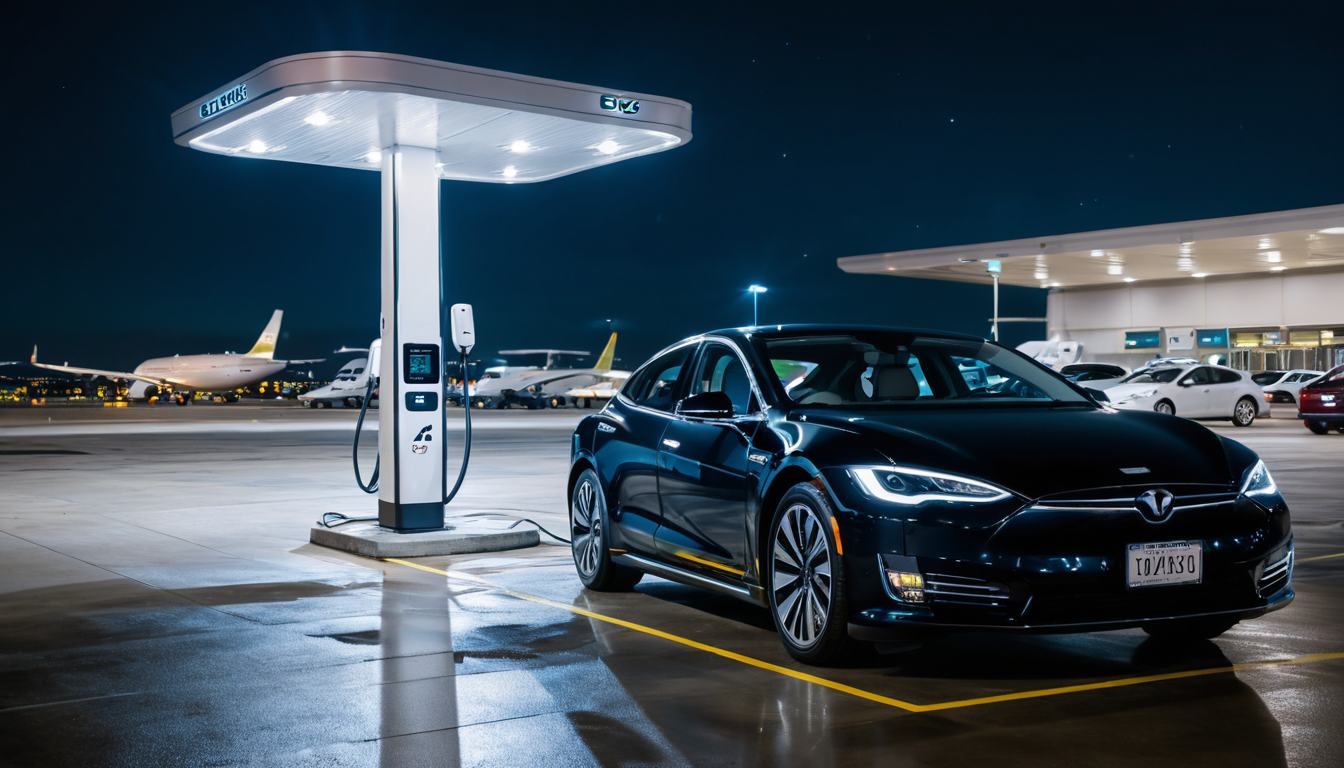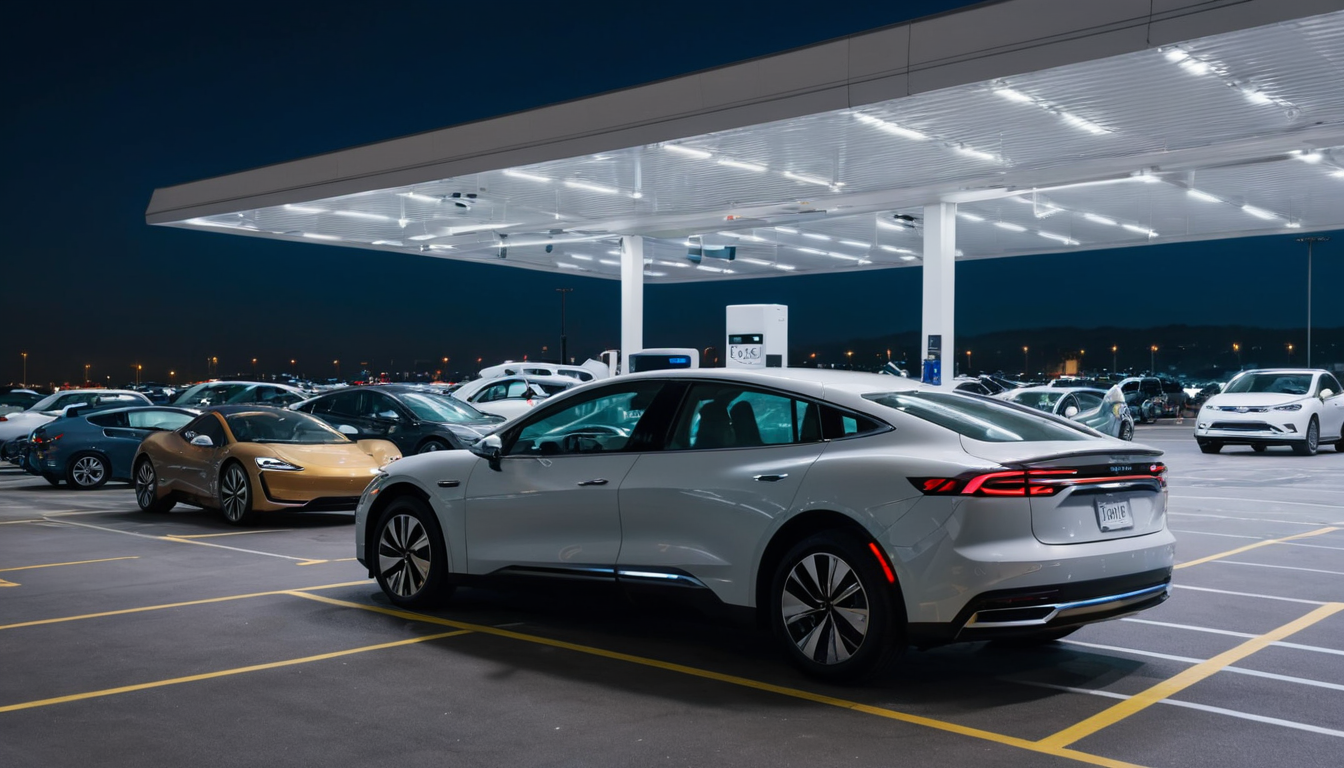In an era of escalating concerns about environmental degradation and the rising costs of traditional fuels, alternative fuels are rapidly gaining traction as viable solutions for the future of transportation. With nations across the globe striving to curb carbon emissions and lessen their dependence on fossil fuels, innovative fuel options such as biofuels, hydrogen, and natural gas have taken center stage in the automotive industry. These alternatives are not only transforming the way we fuel our vehicles but also reshaping the entire global energy landscape.
This comprehensive guide explores the different types of alternative fuels, their environmental and economic impact, and how the global market is adapting to this change. Whether you’re a car enthusiast or an everyday driver looking to understand the future of fuel, this post will provide valuable insights into how alternative fuels are making their mark and what this means for the future of driving.
Understanding Alternative Fuels: What Are They and How Do They Work?
What Are Alternative Fuels?
Alternative fuels are energy sources used to power vehicles in place of conventional gasoline or diesel. These fuels come from renewable or non-renewable sources and have been developed as a means of reducing carbon emissions, improving energy efficiency, and enhancing sustainability in the transportation sector. Unlike traditional fuels, which are derived from petroleum, alternative fuels typically emit fewer pollutants and have the potential to significantly reduce the transportation industry’s environmental footprint.
Types of Alternative Fuels
There are several types of alternative fuels currently being explored, each with its own unique benefits and challenges. Here are the most prominent ones:
- Biofuels
- Derived from organic materials such as plants, algae, and waste, biofuels can be used in place of gasoline and diesel. The most common types of biofuels are ethanol and biodiesel.
- Hydrogen
- Hydrogen fuel cells generate electricity by combining hydrogen with oxygen, emitting only water vapor as a byproduct. Hydrogen is seen as a clean energy source for both vehicles and power generation.
- Natural Gas
- Compressed Natural Gas (CNG) and Liquefied Natural Gas (LNG) are increasingly being used as alternatives to gasoline and diesel. Natural gas is abundant, cleaner than traditional fossil fuels, and emits fewer pollutants.
- Electricity
- Electric vehicles (EVs) are powered by electricity stored in batteries. As the technology for battery storage improves, electric cars are becoming an increasingly popular choice for reducing greenhouse gas emissions.
How Do They Work?
Each alternative fuel operates on a different principle, but the goal remains the same: to power vehicles while reducing the environmental impact. For example:
- Biofuels are burned in traditional internal combustion engines but are considered more sustainable than fossil fuels due to their renewable nature.
- Hydrogen fuel cells work by splitting hydrogen molecules and combining them with oxygen to produce electricity, which powers an electric motor.
- Natural gas vehicles run on compressed or liquefied gas that fuels an internal combustion engine, much like gasoline but with lower emissions.
Biofuels, Hydrogen, and Natural Gas: Global Adoption and Benefits
Biofuels: Powering the Future of Transport
Biofuels have been one of the most widely adopted alternative fuels worldwide. Ethanol, often derived from corn or sugarcane, is commonly mixed with gasoline to reduce dependence on petroleum. Biodiesel, made from vegetable oils or animal fats, can be blended with conventional diesel. Some regions, especially in North and South America, are major consumers and producers of biofuels, with Brazil being a leader in the production of ethanol from sugarcane.
Benefits of Biofuels:
- Renewable Energy Source: Biofuels can be replenished quickly through the cultivation of crops or the use of waste products.
- Lower Carbon Emissions: Biofuels release fewer greenhouse gases compared to traditional fossil fuels.
- Economic Growth: The production of biofuels supports agricultural sectors and creates jobs in rural areas.
Challenges:
- Land Use Competition: The cultivation of biofuel crops can compete with food production, leading to potential issues with food security.
- Energy Efficiency: While biofuels are cleaner than fossil fuels, they may not be as energy-efficient as other alternatives, such as electricity.
Hydrogen: The Clean Power of the Future
Hydrogen is seen as one of the most promising alternatives to gasoline and diesel, especially for larger vehicles like trucks and buses. Hydrogen fuel cells are used to generate electricity through a chemical reaction between hydrogen and oxygen, with water vapor being the only byproduct. Leading car manufacturers like Toyota, Hyundai, and Honda have already developed hydrogen-powered vehicles, and infrastructure for hydrogen fueling stations is growing.
Benefits of Hydrogen:
- Zero Emissions: The only byproduct of hydrogen fuel cells is water, making it an incredibly clean energy source.
- Energy Efficiency: Hydrogen fuel cells are highly efficient at converting energy, which could lead to longer driving ranges for vehicles.
- Diverse Applications: Hydrogen is not just for cars—it can be used in buses, trucks, trains, and even aircraft.
Challenges:
- Infrastructure Limitations: The lack of widespread hydrogen refueling stations is a major barrier to mass adoption.
- Production Cost: Hydrogen production can be expensive, particularly when derived from renewable sources, which limits its affordability.
Natural Gas: A Bridge to Cleaner Energy
Natural gas, specifically compressed natural gas (CNG) and liquefied natural gas (LNG), has been gaining popularity as an alternative fuel for trucks, buses, and even passenger vehicles. It’s seen as a “transitional” fuel that can reduce emissions while the world moves towards more sustainable alternatives like electric and hydrogen-powered vehicles.
Benefits of Natural Gas:
- Cleaner than Gasoline or Diesel: Natural gas emits fewer pollutants and greenhouse gases.
- Abundant Supply: Natural gas is widely available and relatively inexpensive compared to other alternative fuels.
- Cost-Effective: It’s cheaper than gasoline or diesel, making it an attractive option for fleet owners.
Challenges:
- Limited Infrastructure: While CNG and LNG stations are increasing, they are still limited compared to gasoline and diesel stations.
- Methane Emissions: Methane is a potent greenhouse gas, and leaks from natural gas production, transportation, and storage could offset some of the benefits.
The Economic and Environmental Impact of Alternative Fuels
Economic Implications
The transition to alternative fuels offers both challenges and opportunities for the global economy:
- Energy Security: Diversifying fuel sources reduces dependency on oil imports, especially from politically unstable regions. Countries investing in local production of biofuels, hydrogen, and natural gas can bolster their energy security.
- Job Creation: As new technologies and industries emerge, job opportunities in renewable energy, fuel production, and infrastructure development grow. For example, the biofuels sector creates agricultural and manufacturing jobs.
- Global Market Dynamics: The shift toward alternative fuels is changing the competitive landscape. Countries leading in the development of hydrogen infrastructure, electric vehicles, and biofuels will play a more prominent role in global energy markets.
Environmental Impact
The environmental benefits of alternative fuels are clear, especially in terms of reducing greenhouse gas emissions:
- Biofuels can significantly reduce CO2 emissions when compared to gasoline and diesel, although land-use changes and crop production still have an impact.
- Hydrogen is a clean energy source that only emits water vapor, making it one of the most environmentally friendly options.
- Natural gas reduces air pollution and carbon emissions compared to traditional fossil fuels, though its environmental benefits are somewhat limited by methane emissions during extraction.
Overall, the widespread adoption of alternative fuels could be a crucial step in achieving global climate goals, reducing carbon footprints, and slowing the effects of climate change.
Regional Differences in Fuel Types: Where Are They Most Popular?
North America: A Hub for Biofuels and Natural Gas
In North America, particularly in the United States and Canada, biofuels like ethanol and biodiesel are commonly used, especially in the agricultural sector. The U.S. has a strong biofuel production industry, with corn-based ethanol accounting for a significant portion of the fuel supply. Natural gas is also popular for heavy-duty vehicles and fleets due to its affordability and reduced emissions.
Europe: Pioneering Hydrogen and Electric Vehicles
Europe is a leader in the adoption of electric vehicles (EVs) and hydrogen-powered cars. Countries like Norway and the Netherlands are making strides in the electric vehicle market, supported by robust charging infrastructure and government incentives. The European Union has also invested heavily in hydrogen technology, with plans for widespread hydrogen fueling stations across the continent.
Asia: Hydrogen and Biofuels Lead the Way
In Asia, countries like Japan and South Korea are pushing forward with hydrogen-powered vehicles. Japan, in particular, has made significant investments in hydrogen infrastructure. In addition, India and China are exploring biofuels as part of their energy diversification strategies, given the large agricultural sectors in both countries.
Africa and South America: Biofuels Dominate
In regions like Sub-Saharan Africa and South America, biofuels are the dominant alternative fuel. Brazil is a global leader in ethanol production, while African nations with agricultural sectors are investing in biofuel development as part of their energy strategies.
How to Transition to Alternative Fuels: What’s Available Now and in the Future?
For drivers and fleet owners looking to transition to alternative fuels, the options available now vary by region:
- Biofuels are available at many gas stations in certain regions, and vehicles can be adapted to run on biofuels with relative ease.
- Hydrogen is still in the early stages of adoption but can be found in select regions, particularly in California, Japan, and Europe.
- Natural gas vehicles are widely available and can be a practical option for both personal and commercial use.
- Electric vehicles are growing in popularity globally, with many automakers offering EV options that are increasingly affordable and practical for everyday use.
In the future, advancements in battery technology, hydrogen production, and fuel infrastructure will likely lead to more widespread availability of alternative fuels, making the transition easier for consumers worldwide.
Conclusion
The future of fuel lies in the diversification of energy sources, with biofuels, hydrogen, and natural gas at the forefront of this transformation. As concerns about climate change, energy security, and rising fuel costs continue to shape the global energy landscape, alternative fuels present a sustainable solution for the automotive industry. While challenges remain, the growing adoption of these fuels across different regions and sectors demonstrates their potential to reshape the way we power our vehicles and the world’s energy markets. As drivers, the time to prepare for a future less reliant on traditional fuels is now—whether through embracing electric vehicles, exploring hydrogen options, or choosing cleaner fuels like biofuels and natural gas. The road to a greener, more sustainable future is already underway.
For more detailed insights on biofuels, hydrogen, and natural gas, check out Energy.gov’s Guide to Alternative Fuels.











4 Comments
tkthovzkhwervnygzyghmqkjgehdrj
ChQVqhm NrdZna SWGtdrk
fkxetlusnvgwkfdrtojxrfkutrpzkn
jFaH ZieW KnA